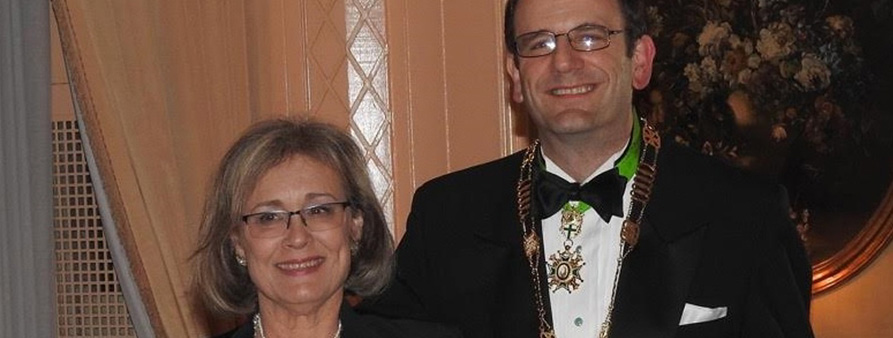Understanding the Basics of the Grand Priory of America
This section provides the novice with a grounding in the basic facts, terminology and customs of the Order. Especially for North Americans, chivalric customs and usage are unfamiliar territory for our meritorious society, which is based upon personal achievement rather than the European recognition of tradition and family. The information contained here also provide a primer on the history and customs specific to the Grand Priory of America. In this regard and in many ways, we Americans differ from the Europeans; we hope, for the overall betterment of the Order, in the belief that new or differing ideas provide genetic strength to a growing and evolving organization.
Tradition & Structure
For those members unaccustomed to the military, the Order represents an institution of largely unrivalled tradition and structure. The Organization of the Order can be traced directly back to its Crusading days, and to the contributions that the military orders made to modern armies in terms of ranks, honors, customs and ceremonies. All national jurisdictions within the Order are similar in organization to the American Grand Priory.
Most of the activities of the Order in the United States occur at the local and regional levels. Commanderies provide the catalyst for identifying and pursuing local charitable activities and for implementing and achieving the goals assigned by the national command (i.e., the Grand Priory). In turn, the Grand Priory implements and achieves the charitable projects assigned to it by the Grand Master and his Grand Magistry (the administrative staff of the Order’s international headquarters).
Member Roles
At the local and national levels there are specific jobs that impact upon your “life,” as Members in the Order. These jobs – performed by ranking officers – should be understood by new Members. The Grand Prior is the “commanding general” of the Order within the American Jurisdiction. He alone can approve new members, promotions, decorations, and make the decision to terminate membership, as well. The deputy commanding general of the Grand Priory is the Chancellor. The Order’s paperwork, including diplomas, certificates, are coordinated by the Priory’s Vice Chancellor of Administration. Medals and accoutrement are provided by the Priory’s Custodians. Ceremonies are coordinated and conducted by the Priory’s Corps of Marshals, who also serve as the official uniformed presence at official functions. The Green Book is maintained and distributed by the Capitulars, and matters of heraldry and the Priory’s archives are managed by a formally trained Herald. There are more than a dozen other management and staff positions, but essentially the Grand Priory functions along military lines as a self-contained “mini-Order,” duplicating all or most of the capabilities of the Order’s Grand Magistry and Council.
Formal Affairs
All events conducted by the Order are formal affairs. Meetings generally include at least one white-tie affair. The Order’s traditional knightly Mantle should always be brought along – most church services, and all investitures, require the wearing of the Mantle (cape) of the Order. Investitures are the formal, time-honored, chivalric event in which new Members are invested into the Order, and when active Members may be promoted or decorated. Both promotions and decorations may be given for either merit or achievement. The night before an investiture involves another beautiful and time-honored event – the candlelight vigil. The Mantle must be worn by all active Members and postulants (postulants are those recruits approved for membership, and thus awaiting investiture). Members: Always bring your cape – without it, you cannot attend!


